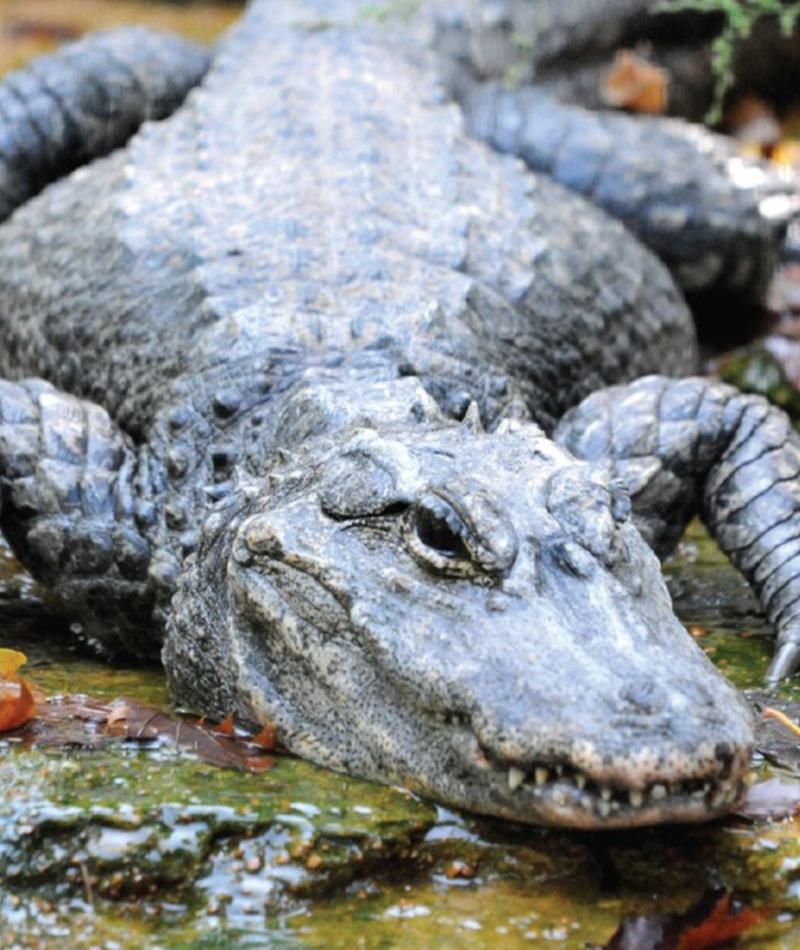
Chinese Alligator
Alligator sinensis
Did you know?
- Chinese alligators are part of the Alligatoridae family, which they share with other alligators and caiman.
- They live around freshwater-based habitats in Eastern China.
- The average male grows to be about five feet (one-and-a-half meters) long.
- A female typically lays 10 to 40 eggs at one time.
Alligator Differences
The Chinese alligator is one of just two alligator species in the world. Compared to its cousin the American alligator, the Chinese alligator is relatively small, with an average total length of about five feet in males and four-and-a-feet in females. The Chinese alligator has a more robust head than its American counterpart, and its snout is tapered and turns up slightly at the end. It also has protective, hard scales that cover its entire body, on top and on bottom. Whereas, the American alligator does not have this protective covering on its belly.
Young and Family
As summer begins, the Chinese become more nocturnal and they begin their mating rituals. Females build nests and lay their eggs, anywhere from 10 to 40 or more at a time. The nestmates inside the eggs are able to communicate with each other and with their mom before they hatch. Usually, the eggs will hatch in September. Moms help the young hatch and then carry the little ones from the nest to the water.
Threat Level
- Unknown
- Common
- Near Threatened
- Threatened
- Endangered
- Critically Endangered
- Extinct in the Wild
Critically Endangered
The Chinese Alligator faces an extremely high risk of extinction in the wild.
Range
Eastern China (confined to a small area in the Yangtze River Basin
Habitat
Rivers, streams, lakes, ponds, swamps, but now mostly found in ditches and ponds on agricultural land

We care about Chinese Alligators
The Chinese alligator, unlike the abundant American alligator, is critically endangered. Scientists estimate that fewer than 130 individuals survive in the wild. The main threat facing the Chinese alligator is habitat loss. The species’ traditional wetland habitat has been largely converted to rice paddies, and the remaining wild populations are confined to drainage ditches and farm ponds in one small Chinese province.
Fortunately, efforts are underway to help the Chinese alligator. The species has been successfully bred in wildlife refuges and in zoos, which maintain healthy populations. In 2003, the first captive-born Chinese alligators were released into their native range.
The Saint Louis Zoo supports Chinese alligators in the Charles H. Hoessle Herpetarium at the Zoo. Learn more about how we are helping wildlife around the world.
Find this animal in Historic Hill

SAINT LOUIS ZOO ZONE
Historic Hill
Historic Hill is a lovely stroll through one of the oldest parts of the Saint Louis Zoo. From the 1904 World’s Fair Flight Cage to the Spanish architectural flavor of the 1920s in the Bird House, Primate House and Herpetarium to the finishing touches of our thoroughly modern exhibits, this area of the Zoo has a unique ambiance and a nostalgic history that make it a great destination.

